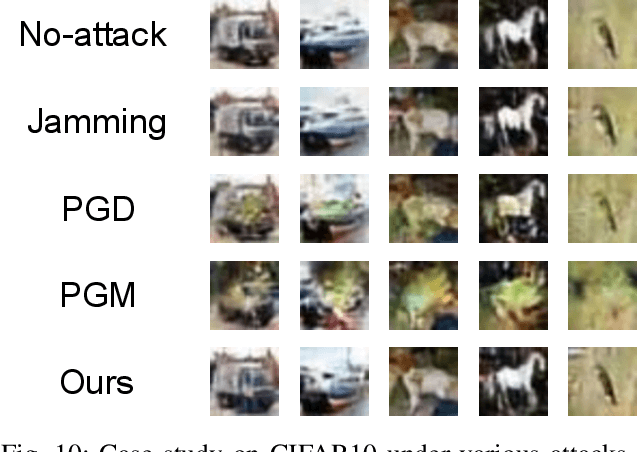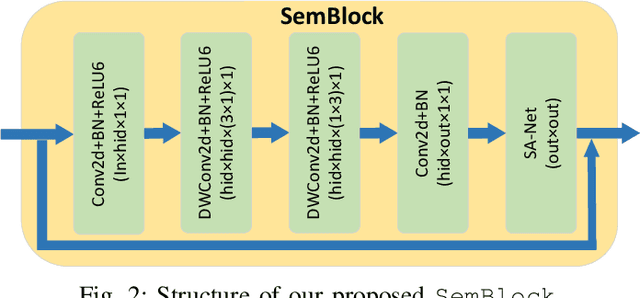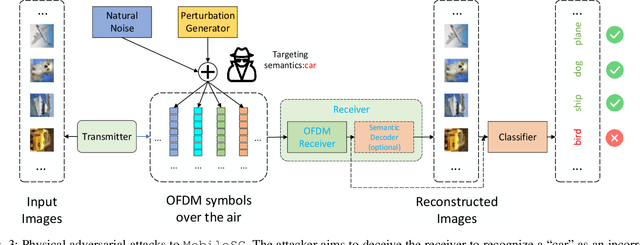Jinli Zhai
Physical-layer Adversarial Robustness for Deep Learning-based Semantic Communications
May 12, 2023



Abstract:End-to-end semantic communications (ESC) rely on deep neural networks (DNN) to boost communication efficiency by only transmitting the semantics of data, showing great potential for high-demand mobile applications. We argue that central to the success of ESC is the robust interpretation of conveyed semantics at the receiver side, especially for security-critical applications such as automatic driving and smart healthcare. However, robustifying semantic interpretation is challenging as ESC is extremely vulnerable to physical-layer adversarial attacks due to the openness of wireless channels and the fragileness of neural models. Toward ESC robustness in practice, we ask the following two questions: Q1: For attacks, is it possible to generate semantic-oriented physical-layer adversarial attacks that are imperceptible, input-agnostic and controllable? Q2: Can we develop a defense strategy against such semantic distortions and previously proposed adversaries? To this end, we first present MobileSC, a novel semantic communication framework that considers the computation and memory efficiency in wireless environments. Equipped with this framework, we propose SemAdv, a physical-layer adversarial perturbation generator that aims to craft semantic adversaries over the air with the abovementioned criteria, thus answering the Q1. To better characterize the realworld effects for robust training and evaluation, we further introduce a novel adversarial training method SemMixed to harden the ESC against SemAdv attacks and existing strong threats, thus answering the Q2. Extensive experiments on three public benchmarks verify the effectiveness of our proposed methods against various physical adversarial attacks. We also show some interesting findings, e.g., our MobileSC can even be more robust than classical block-wise communication systems in the low SNR regime.
 Add to Chrome
Add to Chrome Add to Firefox
Add to Firefox Add to Edge
Add to Edge